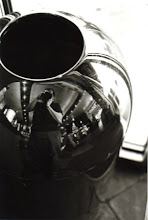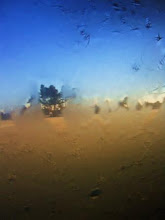My wife recently entered an online travel blog contest on
a mere whim. Shortly thereafter she and I were both extremely delighted to find
out that she was one of ten selected winners. One of the perks was that the
winners were put up in a recently renovated 4 star hotel on the edge of Union
Square to listen to speakers who are in the industry, develop connections,
enjoy the city, etc. Obviously, we couldn’t pass up the opportunity, and it was
a great excuse to venture back to San Francisco. So, last month we headed to
the bay for a mini holiday.
One of the landmarks overwhelmingly associated with San
Francisco would have to be the Golden Gate Bridge. It opened in 1937 making
this past May 27th, 2012 the 75th anniversary. The color
of the Golden Gate Bridge “international orange” was not intended to be the
permanent color, but was instead the primer. After seeing the bridge in this
vivid color that blended with the hills as well as the city skyline, and
contrasted by both the ocean and sky consulting architect Irvine F. Morrow
pushed to keep the color. The color is a custom formula supplied by Sherwin
Williams, and paint mixture details can be found at the Golden Gate Bridge
website.
Another essential element intertwined with the essence of
San Francisco is the cable car. Andrew Smith Hallidie, whose father was an
inventor with a patent for “wire rope” cable in Great Britain, tested the first
cable car on Clay Street in San Francisco in August, 1873. The Clay Street Hill
Railroad was the solitary cable car company for four years. Several companies
emerged shortly thereafter using Hallidie’s patented system, and by 1889 53
miles of track had been laid. By the late 1880’s the electric street car
emerged and this technology began to threaten the cable cars. As technology
“progressed” in 1947 Mayor Lapnam , for economic reasons, wanted to rid the
city of cable car lines to make way for busses. Mrs. Friedel Klussmann headed
the Citizens’ Committee to Save the Cable Cars, rallied, and retaliated, saving
the cable cars on the November ballot with Measure 10.








No comments:
Post a Comment